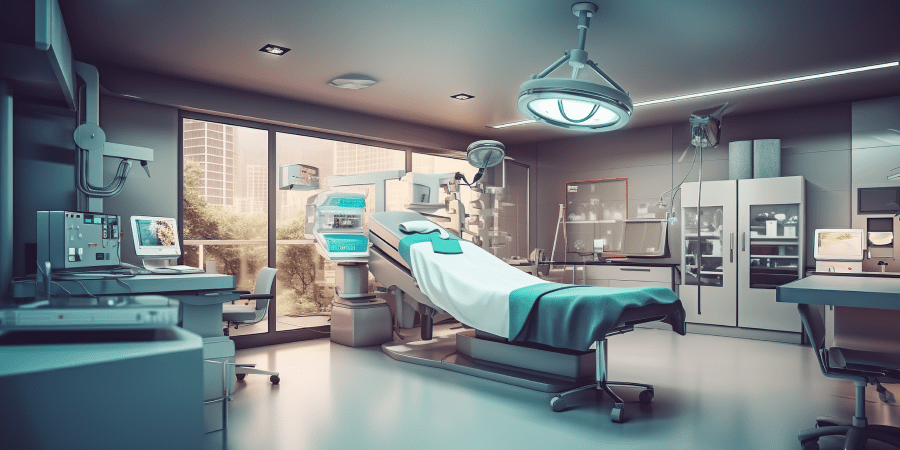In today’s world, we’re all looking for ways to be...
The field of healthcare is continually changing, as are the aesthetics and architecture of medical buildings. Modern clinics have evolved from antiseptic and utilitarian settings to pleasant surroundings that prioritize patient comfort, staff efficiency, and cutting-edge medical technology. Architects and designers play an important role in shaping these healthcare environments, taking into account a variety of aspects that contribute to the facility’s overall performance. Today’s clinics emphasize utility, aesthetics, and cutting-edge technology to create environments that encourage healing, comfort, and efficiency.
In this article, we look into the essential architectural issues for modern clinics that architects and designers must keep in mind as they take a building from paper to flesh. Every detail of the clinic’s design is meticulously stitched together to guarantee it fulfills the greatest standards for healthcare delivery, from strategic space planning and patient-centered design to sustainability, accessibility, and integration of advanced medical technologies.
The Importance of Clinic Architecture in the Modern Age
The design of modern clinics is crucial because it affects how both patients and doctors perceive their time spent there. Comfort and well-being are just two of the many benefits that come from a clinic that has been thoughtfully built. Clinics in the modern day require careful spatial planning to facilitate efficient operations and make use of cutting-edge medical technologies and equipment. Patient-centered design principles guarantee that the clinic’s layout is conducive to efficient patient flow, with short wait periods and plenty of quiet areas for discreet discussions.
The presence of natural light, calming colors, and tasteful decor all contribute to a relaxing and comforting atmosphere that is conducive to recovery. Clinics that include sustainability measures in their design show they care about their patient’s health and the environment. Overall, modern clinics that put patients’ needs, the well-being of their personnel, and the efficacy of their services first require well-considered architectural design.
Considerations for Modern Clinics’ Architecture
Modern clinics’ architecture requires careful consideration to meet the evolving needs of healthcare delivery and enhance the overall patient experience. Some key considerations include:
1. Functional Space Planning
Space planning is an essential initial step in creating a state-of-the-art medical facility. The clinic’s architects and medical staff work together closely, sharing knowledge and insights to better understand the facility’s needs. The architects of a healthcare institution can improve the experience for both staff and patients by carefully considering the services to be provided and the movement of patients through the building. Successful clinic layouts rely on careful functional space planning, which involves allocating spaces for certain purposes.
The first impression of a patient is crucial, thus care is taken to build a reception room that is both comfortable and efficient. The layout of waiting areas takes into account the varying needs of patients and strives to make them as comfortable and private as possible.
2. Patient-Centered Design
Clinics have come a long way from their days of imposing upon their patients. There has been a dramatic change toward patient-centered architecture in the dynamic field of healthcare design. The goal of today’s state-of-the-art medical facilities is to make each patient’s visit a positive healing and supportive experience. At the center of this evolution is the idea of patient-centered design, in which every detail is intended to facilitate recovery, alleviate anxiety, and create confidence in the patients receiving care there.
The use of natural light is an essential component of patient-centered design in healthcare facilities. Large windows and skylights are carefully placed by architects to let natural light flood the building’s interior. Patients’ moods and outlooks can be improved by exposure to natural light, according to studies.
3. Accessibility and Universal Design
In the realm of cutting-edge healthcare facility layout, there is an unshakable dedication to accommodating patients with all types of physical impairments. Architects give this a lot of thought since they know that patients with a wide range of needs should feel comfortable in a healthcare facility. The implementation of universal design principles is central to this work, with the overarching goal of making spaces that are accessible and usable by all people, regardless of their ability to move around or other physical constraints.
Installing ramps and elevators is crucial when planning an accessible clinic’s layout. Wheelchair and mobility aid users will appreciate the convenience provided by these features. The entryways and interior areas of the clinic have been designed with ramps that include gentle inclines to facilitate unimpeded mobility. Patients can easily access all areas of the clinic thanks to elevators located in a central location on each floor.
4. Infection Control and Hygiene
Architects have a critical role to play in ensuring the cleanliness and safety of healthcare facilities by giving top consideration to infection prevention methods. Architects incorporate novel design solutions to reduce the potential for the spread of infections in healthcare facilities, protecting the health of patients and workers. Choosing the right materials for surfaces in exam rooms and treatment areas is a crucial part of infection control in clinic design.
To reduce the possibility of germs being harbored and to facilitate complete disinfection, architects favor non-porous and easily cleanable materials like stainless steel, laminates, or smooth tiles. These surfaces prevent bacteria and viruses from sticking around for long, which improves hygiene and lessens the chance of infection spreading.
5. Integration of Technology
When it comes to bettering patient outcomes and streamlining medical procedures in today’s healthcare system, technology is emerging as a crucial ally. Architects play a crucial role in designing hospitals that can keep up with these developments by incorporating state-of-the-art medical equipment into every aspect of patient care. This method ensures that hospitals provide cutting-edge care while remaining open to new ideas. When designing a clinic, the architects give considerable consideration to how various medical technologies will be part of the space.
The constantly expanding field of telemedicine within healthcare necessitates meticulous planning in the design phase. To ensure that patients can access healthcare specialists virtually regardless of their location, architects design specific areas to house telemedicine technology. With careful consideration given to patient confidentiality, these areas facilitate easy communication and remote consultations.
6. Privacy and Confidentiality
Confidentiality and privacy for patients are fundamental necessities in the medical field. It is the responsibility of architects to create environments where patients and doctors can have private conversations without fear of eavesdropping. It is possible to build walls and ceilings out of soundproofing materials to lessen the impact of background noise and maintain the confidentiality of discussions. The clinic’s design prioritized the need for private areas for patient interviews and physical examinations.
The architects of medical facilities carefully situate patient examination and treatment rooms to protect patient’s privacy. In addition, there is physical separation between waiting area seats to give patients a sense of privacy and reduce the likelihood of overhearing confidential conversations.
7. Sustainability and Green Design
Today’s hospitals and clinics increasingly employ green architectural and building methods. Because of their lower energy consumption and longer lifespan, LED lighting fixtures are a popular choice among architects. Furthermore, motion sensors and dimmers serve as smart lighting controls to improve energy usage by automatically adjusting lighting levels according to occupancy and natural light availability. Another area where sustainability is a top priority is HVAC (heating, ventilation, and air conditioning) systems.
Architects commonly utilize modern heating, ventilation, and air conditioning (HVAC) systems because of their ability to keep buildings at a steady temperature while having little influence on the environment. Energy recovery ventilation (ERV) systems have become common ways to trap and reuse waste heat in order to reduce the clinic’s energy consumption and increase its energy efficiency.
8. Ergonomic Staff Spaces
Recognizing the importance of the clinic’s personnel in providing high-quality care to patients, a well-designed clinic will put their needs first. Everyone from doctors to receptionists spends a lot of time at the clinic, where they frequently deal with stressful patients and difficult administrative tasks. That’s why it’s crucial to prioritize the residents’ emotional and physiological health when designing a building. It is important to keep employees’ comfort in mind while designing common areas like kitchens, bathrooms, and workspaces. Staff members can find peace in the break area and enjoy a little break from their hectic schedules.
Comfortable seating, open floor plans, and plenty of windows all contribute to an inviting and invigorating ambiance. By encouraging healthy posture and decreasing the likelihood of musculoskeletal stresses, ergonomic furniture like supporting chairs and adjustable tables improves the well-being of the workforce.
Final Words
There are many factors beyond visual appeal that go into the design of today’s medical facilities with the goal of providing better treatment to patients. Clinics require architects to strike a delicate balance between patient-centric design, functional zoning, accessibility, infection control measures, technological integration, privacy, and staff comfort. When architects work closely with healthcare providers and other stakeholders, they can design cutting-edge facilities that do more than just fulfill current demands; they can also pave the way for future improvements in medical treatment. So, it is important to hire a healthcare architect who is well-versed in these factors is growing as the healthcare sector undergoes constant change.
A skilled and experienced healthcare engineer can bring knowledge, creativity, and a “holistic” way of thinking to the design process. This will make sure that the clinics of the future not only meet the needs of today but are also flexible enough to handle the challenges that lie ahead.










